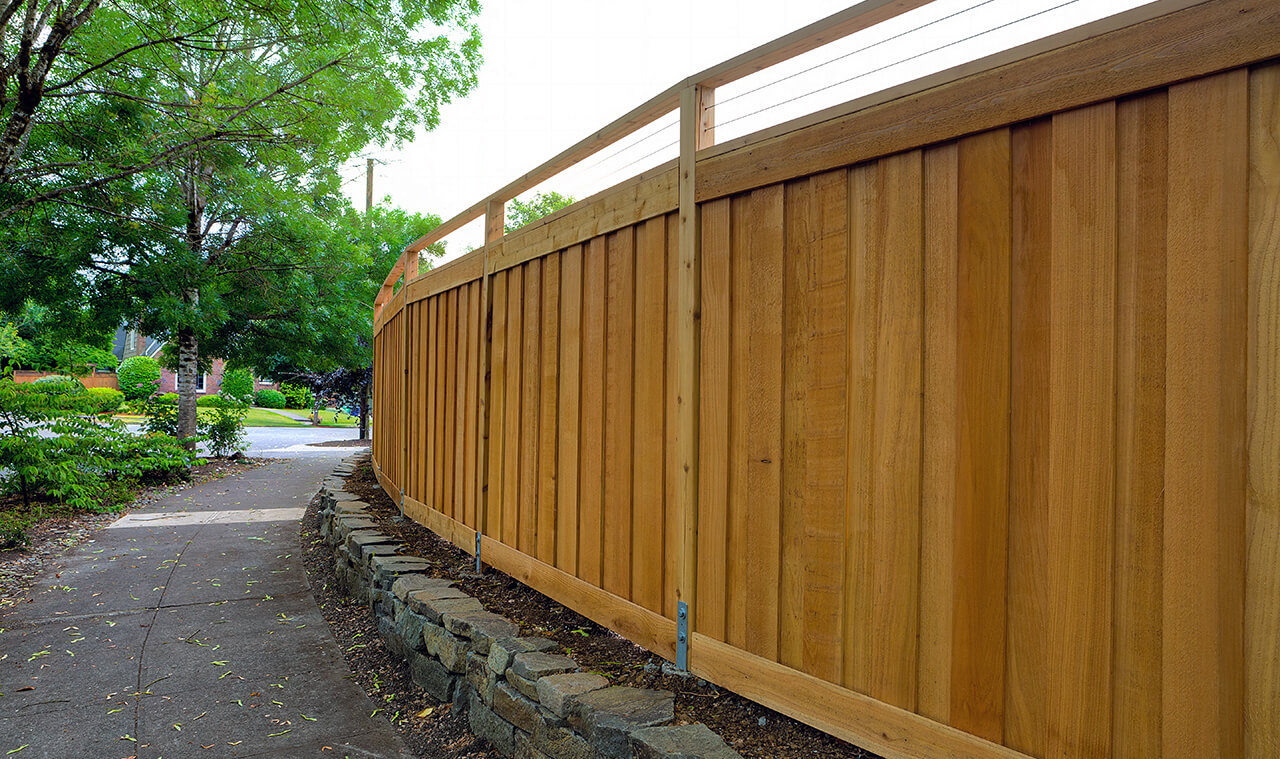- Comparing Fence Types
Friendly Fences for Colorado’s Wildlife
Whether as HOAs or ranchers and farmers, most of us pick out fences based on how their appearance and functionality suit our own needs. In residential areas, we consider which fence will add the most curb appeal, require the least amount of maintenance, add the most visual and acoustic privacy, and give our children and pets a safe place to play. In rural areas where we keep our own livestock, we think about which fences will be cost effective yet strong to contain our animals, exclude wildlife, prevent trespassing, protect gardens and crops, and mark property boundaries.
Whether as HOAs or ranchers and farmers, most of us pick out fences based on how their appearance and functionality suit our own needs. In residential areas, we consider which fence will add the most curb appeal, require the least amount of maintenance, add the most visual and acoustic privacy, and give our children and pets a safe place to play. In rural areas where we keep our own livestock, we think about which fences will be cost effective yet strong to contain our animals, exclude wildlife, prevent trespassing, protect gardens and crops, and mark property boundaries.
These should indeed be our primary considerations, but we should also be mindful of how our fences affect the wildlife world around us, particularly in more rural areas like those that border the front range. Today, we’ll discuss eco-friendly fence options and considerations for protecting our friends in the animal kingdom.
The Dangers of Neglecting to Consider Wildlife
Before we discuss the safest fences for wildlife, let’s take a moment to understand the dangers of unsafe fences. Not being mindful of wildlife safety often inadvertently causes animal injury and even death. To illustrate, Utah State University conducted a study in 2006 that discovered an average of one dead ungulate lying next to fencing every 1.2 miles, and 90% of these fatalities were fawns; the study surveyed 600 miles over the course of one year, meaning that over 400 fawns died (information courtesy of the Biophilia Foundation). Of course, other animals are also affected, but this evidence shows us the importance of being mindful of the animals around us.
The Basics of Safe Fences
Again according to the Biophilia Foundation, there are relatively simple guidelines for designing fences that prevent the majority of such injuries. The following guidelines should be observed: fence top wires should be no more than 40 inches high, bottom wires should be no lower than 18 inches, there should be at least a 12-inch gap between the top two strands, both top and bottom wires should be smooth rather than barbed, and the fence should be easily visible.
Learn About the Types of Fence We Offer
So Which Fences are the Best?
The answer to this question depends on your needs. Cpw.state.co.us’s “Fencing with Wildlife in Mind” offers a comprehensive guide for Colorado fences. We’ve distilled some of the most essential information below. For livestock, smooth wire fences and various post and rail fences (as well as temporary or moveable electric fences) may be used. For horses, post and rail fences, pipe fences, vinyl or PVC fences, tubular panels for portable fences, pipe-and-cable fences, and electric fences may be used. For openings, crosses, and passes, removable fence sections and gates, dropped rail fences, ramps, adjustable wire fences, lay-down fences, and pronghorn underpasses may all work well.
To keep wildlife like deer and elk out, a permanent, non-electric fence that is seven to eight feet in height may be used. Design details vary based on whether you’re protecting a garden, orchard, trying to regenerate an ecosystem, protecting haystacks, excluding deer and elk from residential areas, etc. See pages 29-31 of “Fencing with Wildlife in Mind” for details.
To exclude bears, coyotes, bobcats, and other predators, you may need to select a chain link or woven-wire fence either buried or built on a concrete pad, with doors and gates that lock. Sometimes roofs are even necessary to prevent predatory birds and climbing animals from entering. In this instance, it’s wise to consult with your District Wildlife Manager and/or neighbors since predator problems vary slightly from location to location.
Moving Forward with Your Fence
At Split Rail Fence and Supply Company, we believe in meeting our customers’ needs while being mindful of our environment. Please give us a call to discuss how we can help satisfy your fencing requirements.
